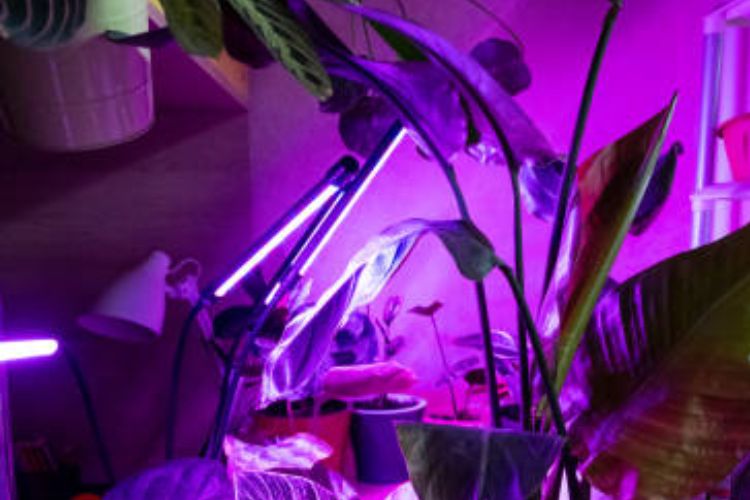Sign up for our newsletter
Get Swipe Garden's independent reviews, and expert advice sent straight to your inbox.
For information privacy practices, read our Privacy Policy.
Sign up for our newsletter
Get Swipe Garden's independent reviews, and expert advice sent straight to your inbox.
For information privacy practices, read our Privacy Policy.
Sign up for our newsletter
Get Swipe Garden's independent reviews, and expert advice sent straight to your inbox.
For information privacy practices, please read our Privacy Policy.

Sunlight is an important factor for plant growth. However, you cannot let sunlight shine all day on your plants. At this time, grow lights will work optimally.
Understanding the proper light installation is essential for indoor gardening success. If you are wondering how to hang grow light, you’ve come to the right place!
Hanging the grow light system at the proper distance and height is essential for it to work effectively. Here are the five steps to help nail this task.
First, make sure you don’t miss any tools from this checklist:

First, you may install the plant lighting system in your grow room or tent. Regardless of your choice, the bulb shouldn’t reach the greenery. Pay attention to all the elements of the ceiling. For example, if your ceiling has an overhead fan, keep your plant far from it. Often, the best spot for your plant is the empty area on the floor. Its ceiling area should be empty, too. And it’s where you place the grow light.
Once you’ve determined where to install your bulb, mark the exact spot to drill the necessary holes. These holes will serve as the attachment points for the hangers that will hold your light.
You can use a tape measure to ensure accurate measurements. Then, mark the points with a pencil. There are two options for you in this step:
This guide focuses on the second method, where you use hooks. So, after drilling the holes, let’s move to the next step.
Place the hook into the drilled hole, then twist it clockwise with firm pressure until it stays secure on the ceiling. Remember to flick your finger at the hook to check again. Otherwise, the loose hook can’t hold your bulb securely.
Next, you have to install the rope ratchet, which helps you adjust the light’s height. Nylon ropes are the most common choice because they are durable and cheap. There are two options for you: 1/8-inch and 1/4-inch rope. If you have a heavier bulb, go with the 1/4 version.
Now, host the rope from the hook. A yo-yo hanger or an S-screw can help you hold it in place.

Finally, time to hang your grow light! Attach the grow light to the nylon rope. You can use more S-screws and hooks for this step. As mentioned, the rope will help you control your light’s height. For example, if you use a bulb that produces too much heat, like the incandescent bulb, increase the height so your light won’t burn the plant. Otherwise, if you use an LED grow light, keep them about one foot above the plant. This rule applies to all grow spaces. But if you want to lower the bulb exposure and brightness, move it back.
In case you want to install more bulbs for your gardening, repeat the steps above. Yet, use more tools, depending on how many lights you intend to set up.
You have set up your grow lights by our steps. Yet, there are still other tips to make them creative and efficient:

Your planting lights are ready now. Yet, you have some things to do after the installation. For example:
Mastering the technique of hanging grow lights is a game-changer for any indoor gardener. You just need to follow our steps above to set up and hang your light correctly. Yet, be mindful of the light’s heat and performance after installation, and safety must be your top concern in all cases. Hopefully, you will find this guide helpful. Now, follow the tips and you are ready to watch your plants flourish!
FAQs
<strong>Which grow light type is the best? </strong>
It depends on your plant needs. For example, HID lights have the highest intensities. Meanwhile, LED grow light are the most effective at generating illumination for planting lights.
<strong>Should I leave my grow light on 24/7?</strong>
No. Indoor plants require a proper light-dark cycle to thrive. Hence, you have to give them rest time to transfer nutrients to their extremities.
<strong>Why should I use grow lights?</strong>
Your plants can’t access light sources the whole day. In this case, the grow lights can help increase the amount of light on your indoor plants. This illumination is vital for their nutrient absorption, growth, and flowering.
Related posts: